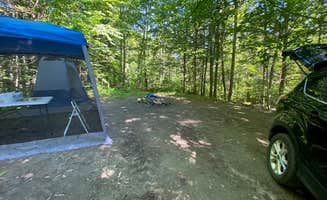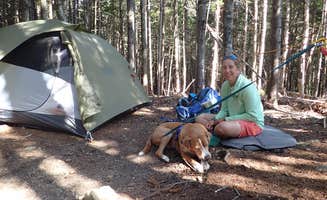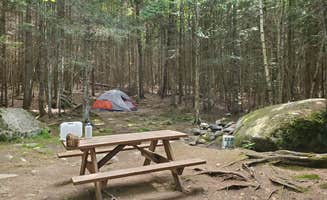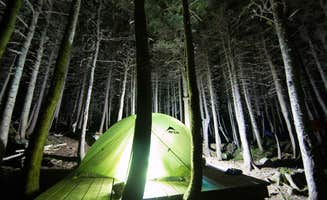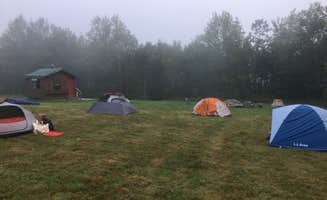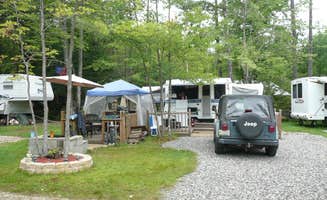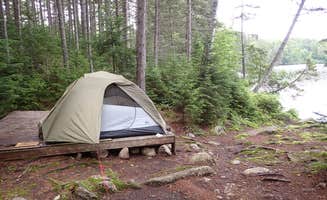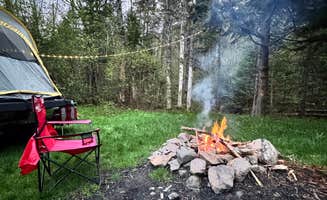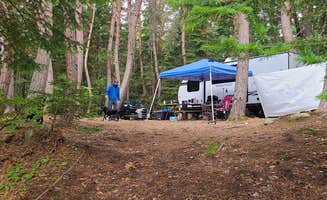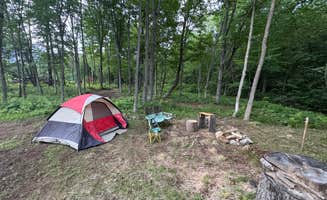Tent campsites near Newry, Maine sit within the rugged western Maine mountains at elevations between 700-1,500 feet. The region experiences warm summers with temperatures typically ranging from 65-80°F during peak camping months of June through September, while evenings cool to 45-60°F. Campers should prepare for frequent afternoon thunderstorms in summer months, with precipitation affecting the area approximately 13 days per month during the camping season.
What to do
Wildlife photography opportunities: At Remote Sites — Umbagog Lake State Park, campers can capture images of diverse wildlife. One visitor noted, "You can kayak with Bald Eagles soaring over your head, swim in a crystal clear lake and enjoy a near wilderness camping experience." The lake and surrounding forests provide habitat for moose, bears, and various bird species including loons.
Paddling adventures: For campers with their own watercraft, the numerous lakes and rivers offer excellent paddling routes. The remote campsites at Stephen Phillips Memorial Preserve Wilderness provide access to Mooselookmeguntic Lake, where "The lake is great for exploring both day and night. I've personally never seen so many stars as I did our on the lake in the evenings." Multiple campers mention bringing or renting canoes to transport gear to island sites.
Hiking from campsites: Several primitive camping areas connect directly to trail networks. Hikers can access the Appalachian Trail from various points near Newry. One camper at Blue Brook Tent Site shared, "We decided to do a little day hike up to a view point once we got ourselves set up for the evening. It's about a half mile or so toward Rim Junction and the trail pops out on a little rocky ledge."
What campers like
Privacy between sites: At primitive tent campgrounds near Newry, the spacing between sites is frequently mentioned as a benefit. A camper at White Mountains Camping on Little Larry Road described it as "8 huge, beautiful campsites in the heavily wooded Evans Notch section of The White Mountains National Forest. It's easy to forget there are other people camping on other sites because they're so far apart."
Stream access for water: Many sites feature natural water sources useful for filtering. According to one camper, "Highwater trail with bridge close by. Great stars. Creek runs through road near sites good for getting water to filter or washing." These water features provide practical utility while enhancing the camping experience.
Night sky viewing: The minimal light pollution in the area creates exceptional stargazing conditions. A visitor to the Hogan Road Pulloff described it as an "amazing lil spot, a pull off the wild rocky road. very private. right next to a serene view of the lake." Several reviewers specifically mention the quality of star visibility from their campsites.
What you should know
Bear safety requirements: Bear activity is common in the region, particularly at higher elevations. A reviewer at Northern Waters Base Camp warned about proper food storage, noting that some sites provide "a kitchen area with a bear box. Be advised that the box is significantly rusted and quite gross when you open it." At other sites without infrastructure, hanging food becomes necessary.
Water treatment essentials: No potable water exists at most primitive sites. According to campers, "The water source is a freely flowing little flume just down a little path from the shelter. The water seemed to have tannins, but was fine, and were filtered it anyways." Pack water filtration equipment for any tent camping trip in this area.
Cell service limitations: Connectivity varies dramatically by site and carrier. One camper reported, "Even had a cell signal that gave data with a weboost" at White Mountains Camping on Little Larry Road, while others noted service only at specific sites: "Site 4 and 5 get some cell service." Most remote areas have no connectivity.
Tips for camping with families
Island camping options: For families wanting a unique experience, island campsites provide natural boundaries for children. A reviewer at Hogan Road Pulloff near Appalachian Trail shared, "About 1km (.6 miles) of gravel road, easy enough for a big road bike, but don't go any further as it gets rough. Plenty of trees to hang your hammock. Enough space to put up to 3-5 tents."
Bug preparation: Insect protection is essential, particularly in early summer. Multiple campers emphasize bringing repellent, noting "Bring the bug spray mosquitoes are fierce!" Ticks are also present in the area, requiring regular checks after outdoor activities.
Weather readiness: Mountain weather changes rapidly and unexpectedly. A camper advised, "Weather can change quickly out there. Gets windy. So be prepared." Families should pack clothing for temperature swings of 30+ degrees between day and night, even in summer months.
Tips from RVers
Alternative accommodations: Most dispersed tent camping sites near Newry cannot accommodate RVs due to narrow, rough access roads. One review states, "These campsites are located on a dead end dirt road... The road is uphill." RV campers should consider established campgrounds further from Newry or use tents at primitive sites.


